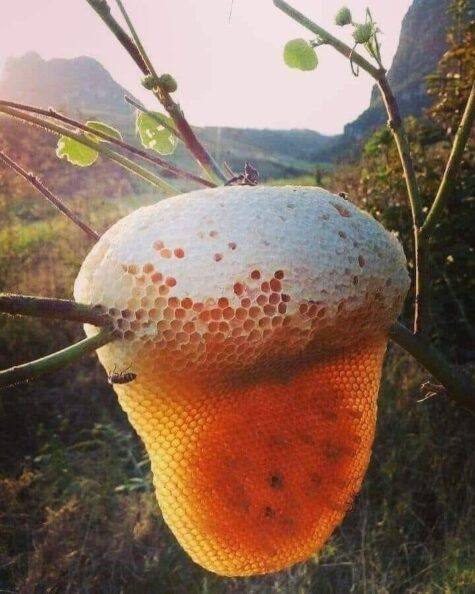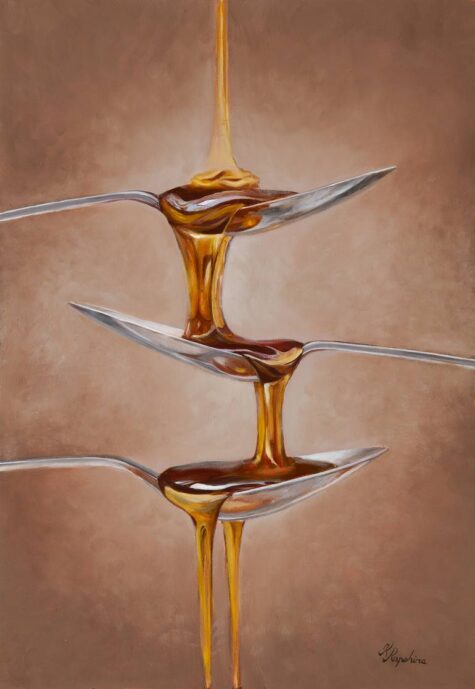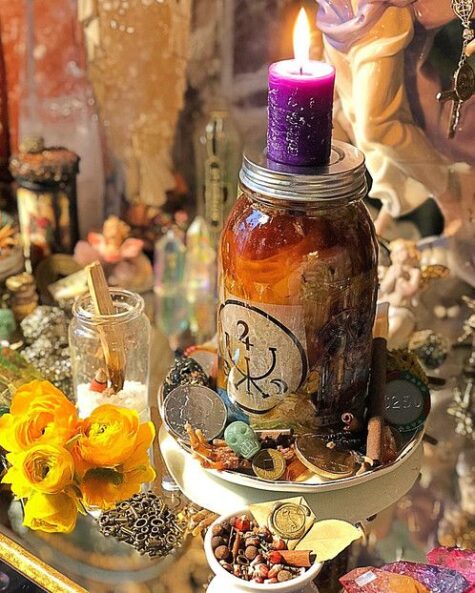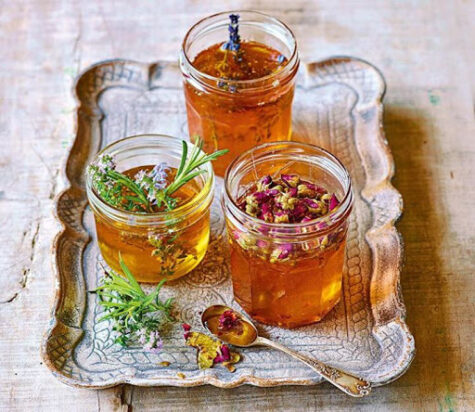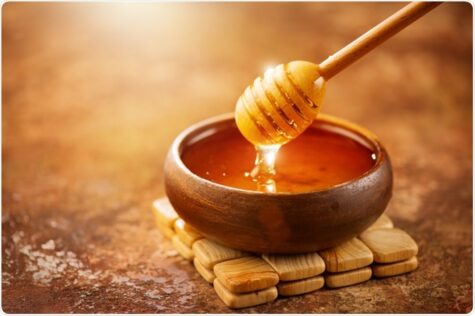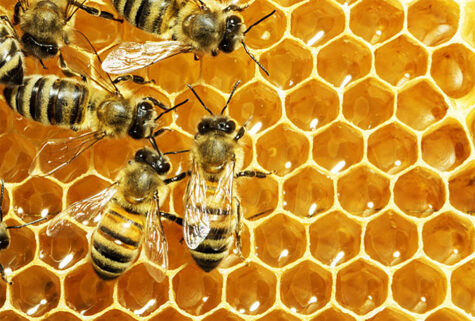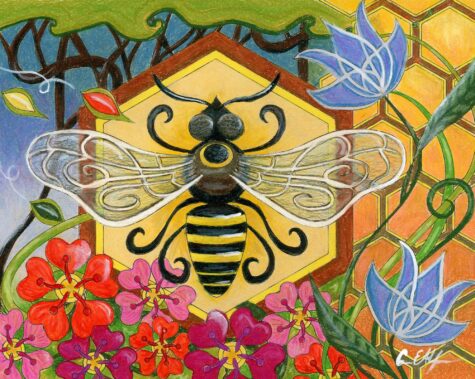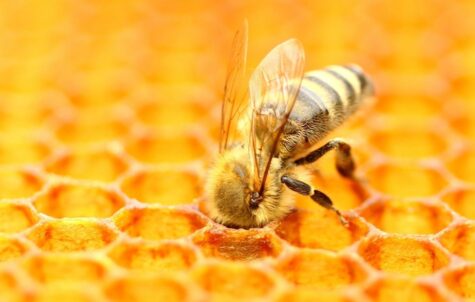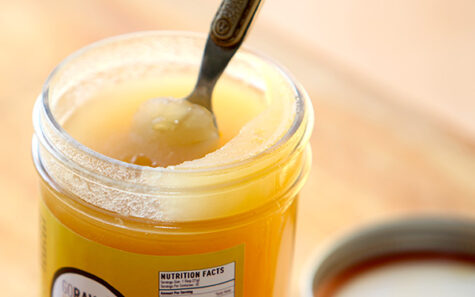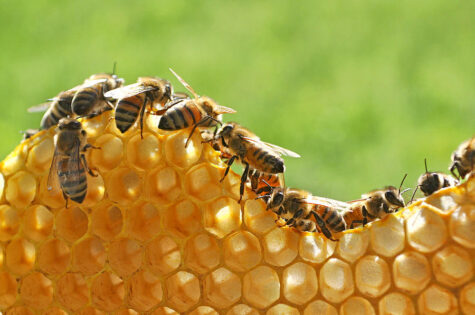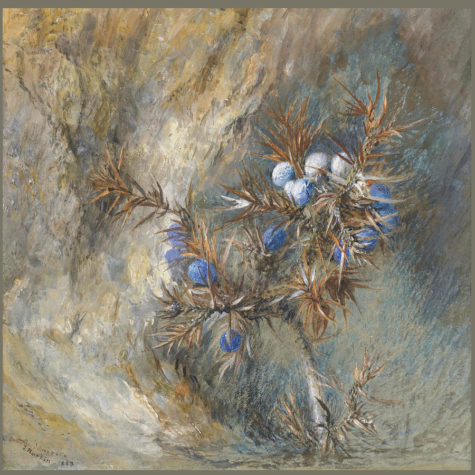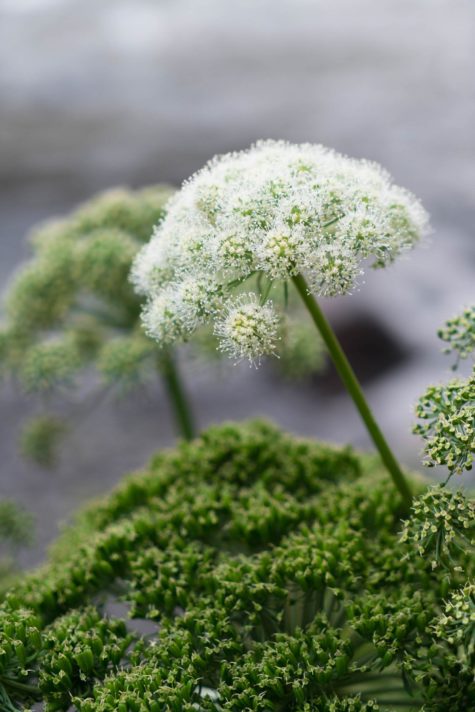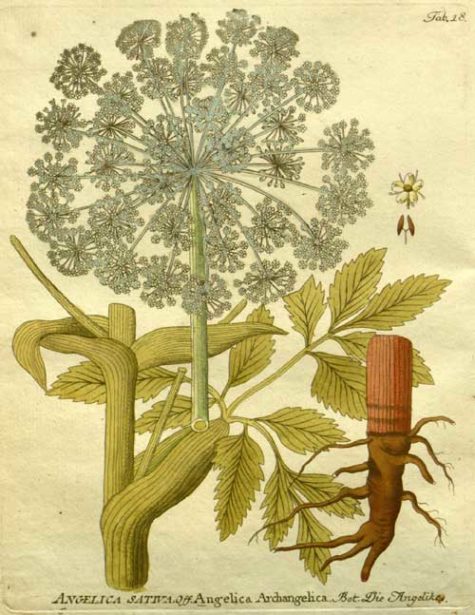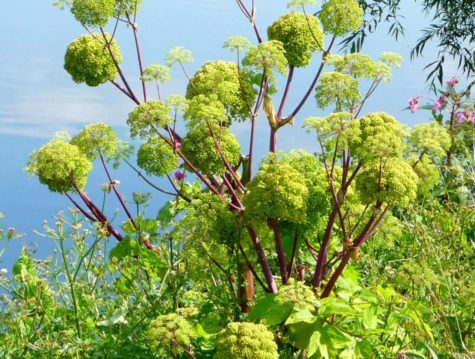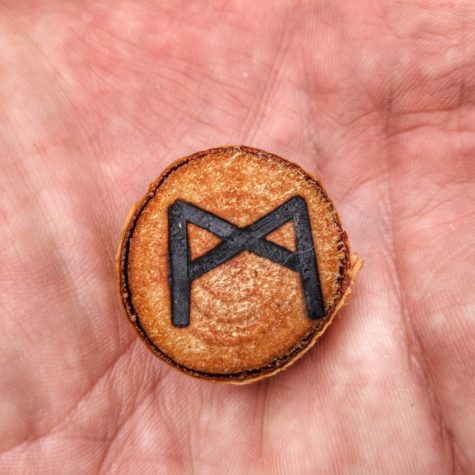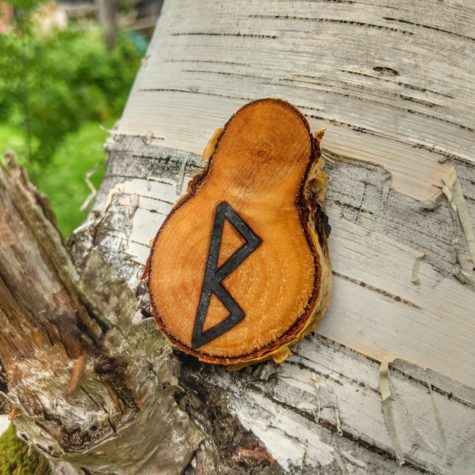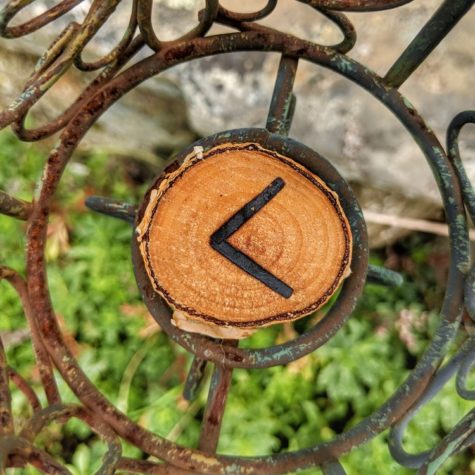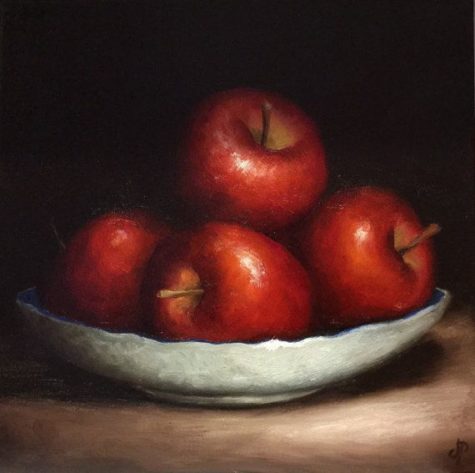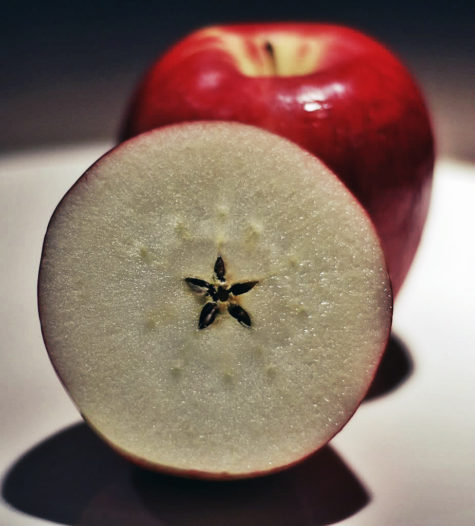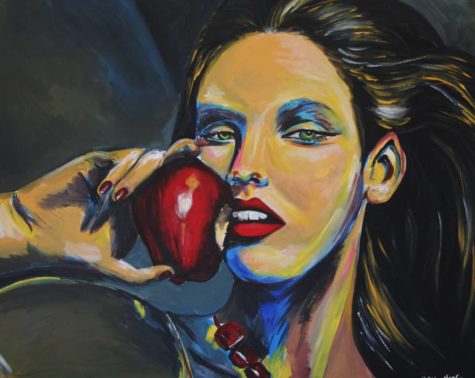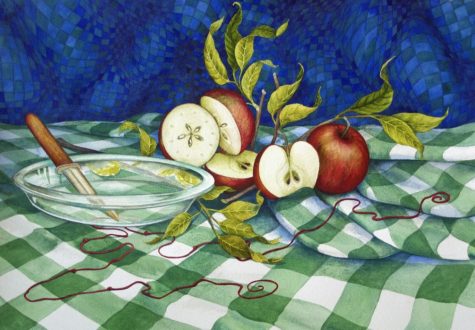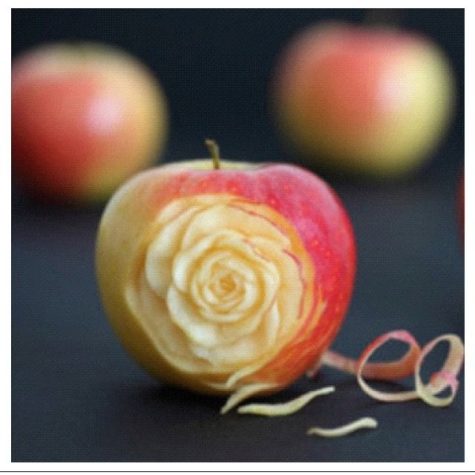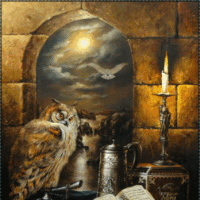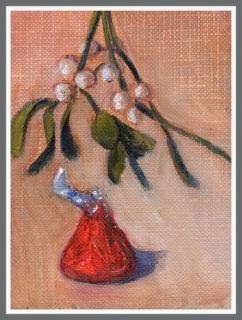Healing
- Rulers: Oshun, Ra, Vishnu, Krishna, Aphrodite
- Element: Water, Earth
- Gender: Feminine
- Number: Six
- Sacred Geometry: Hexagon
- Type: Food
- Magickal Form: Any type
- Qualities: Sweetening, Binding, Happiness, Healing, Love, Prosperity, Passion, Spirituality, Faerie
Honey – the glorious nectar of the bees is one of the oldest foods known to man…and woman. Honey’s history is extensive. A 8,000 year-old cave painting in Valencia, Spain depicts humans hunting for honey. Honeybees were sacred to numerous ancient civilizations including ancient Greece and Egypt. Our ancient ancestors knew that honey isn’t JUST good to eat, it also has multiple medicinal benefits.
The oldest honey ever found comes from an Egyptian pyramid – it’s three thousand years old and still perfectly edible! Microbes don’t grow on honey, moreover preservation lasts for thousands of years!
The Egyptians held the honeybee in high regard and used honey in their mummification process. Therefore honey was a sacred substance and sacred to any gods and goddesses of the underworld and the dead: i.e. Anubis and Osiris. In Ancient Greece, the high priestess of Aphrodite was “Melissa” which translates to “bee”. She tended to the sacred beehives at Aphrodite’s temple on Mount Eryx.
Honey has a number of magickal proprieties, uses and distinct energies. the energies vary depending on which strain of honey you are working with. but overall I would describe them as positive, cleansing, gentle, soothing and warming. its great for spells, offerings and brews.
Honey can be added to any spell work or any culinary recipe to sweeten someone’s mood or disposition. Honey works well for happiness, love, prosperity and healing, it can also add a bit of zing to your love life too.
- Honey makes an acceptable offering for deities.
- It can be kept on your altar (I keep some on my altar to remind me that amongst the seemingly overwhelming bitterness of everyday life that sweetness can be found).
- Can be used in spells having to do with love, lust or sexuality.
- Purification (works great in bath scrubs).
- Health and healing.
- Community or communication.
- Abundance and prosperity.
- Spirituality.
- Candle magic (for anointing or beeswax candles).
- Honey can be used to represent wisdom, because gathering honey from hives can be difficult and painful if done incorrectly so it became a metaphor for obtaining knowledge through pain.
Honey is used to make mead which is absolutely delicious and wonderful to use in ritual and offerings…half a glass and I am away with the faeries…who actually like a drop of mead or honey as well…
Because of its sticky properties, honey can be used in magick to hold two things together. Some magical traditions use honey to bind a couple that has a shaky relationship. If you want to do a honey binding on a couple – or even on two friends who are struggling with their friendship – you can use poppets with a layer of honey between them, and then wrapped with a cord. Because honey does not solidify, you can always separate the two poppets later with minimal disruption. It’s good for binding spells because it can be undone fairly easily.
Use honey to sweeten a situation: angry co-workers or boss, court cases, family quarrels, divorces, etc. In addition, binding things or people together and keeping things flowing steadily. Healing and cleansing rituals include honey.
Use this sweet and sticky substance to attract good fortune, fertility, and love.
- For wealth, create an altar with coins drizzled with honey.
- For a conception spell, cover a pumpkin with honey and offer to a river.
- For love, bathe in warm water and honey.
- Add a drop of honey to incense blends to sweeten the mood.
- Add a spoon of honey to a bath to cleanse and sweeten your aura.
- Drip small drops of honey onto or around candles for love and prosperity spells.
- Leave on outside altars to attract faeries.
- Use to summon angels and light beings.
- Anoint your third eye with magical honey to dream of your future love.
If you do any kitchen magick, honey can come in very handy. Use it in dishes to bring about sweetness, fertility, or prosperity. You can use honey in rituals as an offering to deity–many goddesses and gods seem to appreciate it. You can also use a blend of milk and honey to asperge a sacred space if you’re holding ritual outdoors. Add some into a bath scrub for a ritual bath prior to working for love or romance, or anoint a candle with it when you’re doing candle magick.
Some ancient cultures used honey in embalming procedures. It’s always appropriate to leave offerings of honey at a gravesite. In addition, the folklore of a number of societies indicates that a blend of honey and milk is an acceptable offering to a deity. Honey makes an excellent offering to the gods, the spirits and the Faerie world.
Poured into the ocean and river, honey is an appropriate offering to sea and river goddesses like Oshun and Yemaya. Keep on the altar as a link to ancient bee priestesses and honeybee spirit guides.
In particular, honey is sacred to Aphrodite, the goddess of love and beauty. This is also a favorite offering for other love goddesses. An assassination attempt was once made on the African love goddess, Oshun. The plot was to poison her with honey. In remembrance of this, always taste the honey first before offering libations to any goddess.
In Hindu texts, honey is described as one of the five sacred elixirs of immortality. The Buddhist faith celebrates Madhu Purnima, which honors the day that Buddha made peace among his disciples – and honey is given as a gift to monks in his honor.
Honey Jars
These jars are also known as “sweetening jars,” and can actually contain almost any kind of pure sweetener, such as brown or white sugar, molasses, or syrup. You can make jars for each person you want to sweeten if you’re working more elaborate spells on them, or keep one jar with lots of names in it for general sweetening.
In some forms of Hoodoo and folk magick, honey is used to sweeten someone’s feelings towards you. In one traditional spell, honey is poured into a jar or saucer on top of a slip of paper containing the person’s name. A candle is placed in the saucer and burned until it goes out on its own. In another variation, the candle itself is dressed with honey.
Herbal Infused Honey
Honey comes in many forms and from many places all over the world. It varies in color, sweetness, and flavor depending on the region and plants. Some people enjoy infusing herbs and flowers directly into the honey itself. Depending on the herb or flower infused, it will alter the honey magic properties and can be further used for those purposes. For example:
- Lemon balm infused honey: soothes nerves and anxiety and aids in falling asleep; also invokes joy.
- Lavender honey: has honey magic properties of relaxation, love, beauty and purification.
- Rosemary honey: purification, money, love, healing, mental clarity.
- Mint honey: money, prosperity, cleansing, and love properties; plus mint aids digestion.
- Thyme honey: the PERFECT offering for attracting the faery folk to your garden! Thyme is a favorite of fairies as well as honey.
- Rose honey: love, healing, protection, long life.
Medicinal Properties
During the late summer and early fall, honey is a staple crop in many parts of the world. This deliciously sweet and sticky gift from the bee population is considered a health food – it will protect you against allergies if you eat just a teaspoon of locally sourced honey each day – and also has a number of magickal properties.
Honey is incredibly beneficial medicinally but also brings a good dollop of happiness with it. Honey is great for cold and flu treatment. Raw and organic honey is preferable as it is an antibacterial and is high in antioxidants. It can be used in an ointment for treating wounds, burns and cold sores. Honey is also an excellent hangover remedy.
Honey will help in muscle building; a teaspoon of raw organic honey after a workout can induce an insulin spike, allowing your muscles to get the most out of the workout. It can be used as a weight loss aid. Honey can cause changes to the metabolism that will help curb sugar cravings.
The healing power of honey has been known throughout the ages. Honey was used as a traditional Ayurvedic medicine, where it was thought to be effective at treating imbalances in the body. In pre-Ancient Egyptian times, it was used to treat wounds. The Prophet Mohammad glorified the healing powers of honey, and the Quran praised its healing ability.
Sacred Geometry of the Honeycomb
At the heart of our seasonal reverence, there is always light. In the dim light of midwinter we gather around a fire. My children tell me their own creation story of winter’s sleepy sun. It is her time to rest and the small brave fire remains beside us, a comfort in our sun’s absence…
We know winter happens because of the tilt of the earth, and we seek the fire because it warms us. Our winter fires provide one small spark of the sun’s fire. And the light of the sun not only gives us warmth, but color. We are cool blue in winter like the twilight that edges our days and we dream of the season that will fill our world with yellow particles of light like the pollen of the sun.
Many of us hold a glowing beeswax candle on special days during a festival or to create a ritual space. In his bee lecture, Rudolph Steiner compares beeswax to the material of our human body, the worker bees of the hive to the blood coursing through us, and the hexagonal shapes of the honeycomb to our cells. Structures of living organisms are mirrored throughout the natural world and beeswax reminds us of our relationship to the earth. The sweet smell of it when we light a candle is a hint of the warm comfort a bee might find in her small sacred capsule.
Each cell of the honeycomb is a hexagon. It is the perfect shape, the one that holds together in strength and efficiency. There is no waste in a system of cells that fit together at perfect angles, a necessary consideration when a honeybee must consume about eight ounces of honey to create one ounce of wax. The worker bees create their city of hexagons in tandem, each bee following her inherent plan of geometric repetition.
Each cell of the honeycomb may hold the golden honey, converted nectar from meadow flowers; or the precious life that will someday gather more honey, the bee’s larva. So the worker bee creates these small spaces as vessels of life, whether she is aware of this significant purpose or not. We can watch the honey bee create these small sanctuaries, her working body warming the cell as she forms it. This is her part in the circle of life and she puts her heart into her work.
If you wish to draw the honey bee’s symmetrical hexagon shape, you may start with the hexagram, the star that is made by overlapping two equilateral triangles. Connect the points of that perfect star to make the most precise hexagon. The star inside the hexagon holds the poetry of the honey bee’s sacred forms and their relationship to the spiritual body of our human world.
The hexagram, the six-pointed star, is the shape associated with Anahata, the heart chakra. It is the Star of David, it is associated with the Kabbalistic tree of life, and it is one symbol associated with the Christian Son of God. The hexagram is significant in Tibetan Buddhism, in astrology, in occult magic and Wicca practices. Here, once again, is nature’s pattern of repetition through time and space and meaning.
The honey bee sings while she works and we hear her spirit song. Her hum is spun into the fiber of summer so that we associate this vibrational sound with brilliant rays of sunlight that make us stop and close our eyes and feel the sun on our faces. It is no wonder the wildflowers turn their faces toward the sun and are graced by the light healing touch of the gentle honey bee.
The Bee Connection
Bees are incredibly magickal and are often said to be messengers from the Gods and the spirit world.
Tell it to the bees…they are great listeners…when a beekeeper died folklore says that the survivors must tell the bees of their keeper’s death and persuade them to stay rather than follow their keeper to the otherworld.
Anything important should be told to the bees such as marriages, births and other important events but make sure you whisper politely.
Bees are also considered to be an image of the human soul, perhaps due to their natural ability to find their way home from great distances.
Save the Bees!
Humans have relied on the honeybees’ magical work for thousands of years. Not just for honey and its unique magick, but also because honeybees are one of our biggest pollinators! They help us make food by pollinating many of our fruits and vegetables. But sadly, the honeybee populations are dwindling worldwide.
Particularly in the U.S. where there’s a link between pesticides and honeybee disease/death. If all of the honeybees die out, we lose a large portion of our food source. So how do we support the honeybee population and health? Here’s some ways you can help:
- DON’T use pesticides in your lawn or garden and encourage your friends, family and neighbors to do the same
- Plant NATIVE flowers, trees, and shrubs. Native flowers and plants aid your local honeybee and other pollinator populations by providing a natural nectar source
- Put a bee bath in your garden for the bees to bathe and drink
- Support your local organic beekeepers, farmers and gardeners in their efforts to save the honeybees
- Instead of having a honeybee hive destroyed – have someone come out and remove it and re-locate it
- Stop cutting down trees that don’t need to be cut down! Bees and other pollinators and wild life need trees too!
Learn more about how to save the bees here! Help The Bees
Important Note
There is a MAJOR difference between natural raw unpasteurized honey, and processed filtered honey. Most commercial honey has no traces of pollen and lacks beneficial vitamins and enzymes among a host of other natural constituents which are removed due to pasteurization and processing.
Most golden honey you see at your local grocery is dead and far from the health promoting powerhouse of its raw unpasteurized counterpart. Processed honey is not honey at all, and if you desire any kind of health benefits, you must stick to the real stuff.
Sources:
- Magickal Ingredients
- Honey in magick and Folklore
- Vaya’s Witchcraft and Spiritual
- A Kitchen Witch’s World of Magical Food
- Honey Coyote
- Otherworldly Oracle
- Wanderlust
- Shelley Giordano
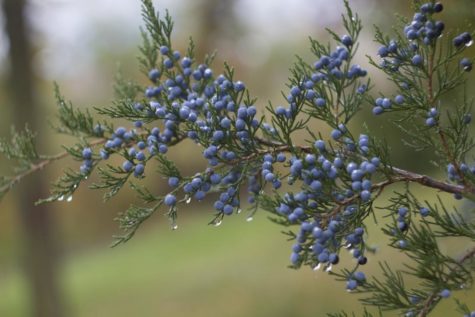
- Ruler: Sun
- Magickal form: Incense, fresh sprigs, berries, essential oil
- Basic Powers: Protection, Love, Healing, Cleansing
- Cautions: Do not drink the tea if you are pregnant, wish to become pregnant, or if you have kidney disease.
In the past, Juniper was regarded as a magick shrub to use against devils, evil spirits, and wild animals. It is mentioned in the Bible as a symbol of protection. Its aromatic scent made it a popular strewing herb, and shoots were burned to disinfect the air in a room.
Brew the berries into a tea and drink it to increase sexual stamina. Crush dried berries to release their scent and add to love potions to attract a man. String the matured berries for an attractive charm designed to attract lovers.
Juniper berries can be used in love spells, particularly to enhance male interest and potency. Steep in wine and drink a few sips daily to increase male virility. Steep in vinegar and add it to your bath to make yourself more attractive to men or apply it directly to the genitals (diluted with water) to increase male interest in them. Or add it to a bath you’re sharing. Juniper berries and their essential oils make for a nice “masculine” scent for men’s cosmetics (aftershave, beard oil, etc.). Use with due caution.
Hang a sprig of fresh Juniper in the home to drive away evil. A sprig of Juniper will protect the wearer from accidents. Sometimes used in anti-theft sachets, as it guards against thieves. Grow Juniper at your doorstep for protection. Gin (which is made from Juniper) can be sprinkled across a threshold to guard against theft.
Juniper is a thief catcher. If you bend a young Juniper branch down to the ground and hold it where you place it with two weights, one a big stone, the other the skull of a murderer, and say, “Juniper, I bend and squeeze you till the thief (name him) returns what he has taken to its place,” the culprit will feel an unaccountable impulse to return the property.’
Brush down the body with a bundle of sprigs to remove illness and place drops of oil in a bowl of water to promote healing in a sick room. Burn Juniper for purification and good health. One of the earliest incenses used by Witches was made from a combination of the leaves and the dried crushed berries.
Though burning Juniper wood gives off only minimal visible smoke, this smoke is highly aromatic, and in ancient times it was used for the ritual purification of temples. The smoke was said to aid clairvoyance, and continued to be burned for purification and to stimulate contact with the Otherworld at the autumn Samhain fire festival at the beginning of the Celtic year.
In central Europe Juniper smoke played a part in the spring-time cleansing and casting out of witchcraft. Juniper was also burned during outbreaks of the Plague, and in Scotland the disease could be dispelled by fumigating the house with Juniper smoke while its occupants were inside, after which the house was aired and the occupants revived with whisky!
Juniper was burned to goddesses and gods in ancient Sumer and Babylon, and was widely used in Egyptian incense formulas. It was sacred to Inanna and her later counterpart Ishtar. Many centuries later in Europe, branches of Juniper were smoldered and carried around fields and farms to release protective energies and guard livestock and crops.
It is a common ritual incense ingredient in Tibet and was much used by various Native American groups.
It is said that a Juniper shrub or tree is a particularly effective and magical hiding place. Perhaps Juniper can be added to hiding and invisibility charms as well.
Juniper essential oil is currently used in traditional aromatherapy to detoxify the body, as a parasite destroyer and antiseptic. This seems in keeping with the “magickal” use of purifying homes and fields mentioned above, for protective rituals are designed to ward off negativity as well as to purge such energies from a person or place.
Inhale Juniper essential oil while visualizing its energies guarding you from negativity and danger. Or, for an internal purification, smell Juniper and visualize.
You can also make Juniper a part of health-maintaining rituals. Regularly smell the scent while seeing yourself eating correctly, exercising, and thinking positively.
Notes:
Because it is a variety of Juniper, and the magickal uses are quite similar, Eastern Red Cedar can be used as a substitute, and vice versa. More about Red Cedar can be found here.
A Healing Ritual
There was a folk medicine custom in some parts of the South West of England of burning the wood and needles close to a sick person. This practice is closely allied to the above New Year customs and presumably recognizes that the vaporized oil released into the air had some beneficial purifying effect to dispel infection.
Like many plants, there was a definite ritual which had to be followed when pulling or collecting Juniper so that the power and essence of the plant was not lost. In the case of Juniper, it had to be pulled up by the roots, the branches made into four bundles and held between the five fingers while intoning the appropriate incantation. Unfortunately the version which has been passed down to us has been heavily Christianised:
“I will pull the bounteous yew,
Through the five bent ribs of Christ,
In the name of the Father, the Son and the Holy Ghost
Against drowning, danger and confusion.”

Juniper Mythology and Lore
Juniper was a symbol of the Canaanites’ fertility goddess Ashera or Astarte in Syria. In the Bible’s Old Testament, a Juniper with an angelic presence sheltered the prophet Elijah from Queen Jezebel’s pursuit. Similarly a later apocryphal biblical tale tells of how the infant Jesus and his parents were hidden from King Herod’s soldiers by a Juniper during their flight into Egypt.
Juniper plants are associated with protection in many different Native American tribes. The Interior Salish and Northwest Coast tribes used Juniper to banish evil spirits and protect themselves from witchcraft.
Among the southwestern Pueblos, junipers were believed to counteract ‘ghost sickness,’ a malady which afflicted bereaved relatives or people who handle the bodies of the dead.
Plains Indian tribes, such as the Dakota, Cheyenne, and Pawnee, often hung Juniper boughs on their tepees or burned them in the camp fire to keep their homes safe from storms.
And in many tribes people, especially hunters, would carry a spring of Juniper as a protective charm or rub Juniper branches on their bodies before embarking on a dangerous journey to protect themselves from grizzly bears, monsters, or general bad luck.
Juniper is one of the herbs frequently included in medicine bundles and amulets. Juniper berries were also eaten by people in some Southwestern and Southern California tribes, and Juniper leaves were frequently used as medicinal herbs.
Folk tradition records a divinatory significance to the appearance of Juniper in dreams, for:
- It is unlucky to dream of the tree itself, especially if the person is sick.
- To dream of gathering the berries, if it be in winter, denotes prosperity.
- To dream of the actual berries signifies that the dreamer will shortly arrive at great honors and become an important person.
- To the married it foretells the birth of a male child.
The largest body of folklore concerning Juniper comes from Iceland where it was traditionally believed that Juniper and rowan could not grow together because each creates so much heat that one or other of the trees would be burn up. For the same reason it was considered not a good idea to bring sprigs of both woods into the house together unless you particularly wanted your house to burn down.
Another Icelandic belief has it that if you are building a boat, you must either use both Juniper and rowan wood or use neither of them in the boat, otherwise it will sink.
In Wales it was said that anyone who cut down a Juniper tree would be dead within a year, while in Newfoundland it was believed that wolves and bears are repelled by Juniper wood and for this reason people who kept stock would ensure that Juniper wood was used in building enclosures or stockades in which livestock would be kept.
Also in Newfoundland it is believed that you will always find water under a Juniper tree, though this seems to contradict the natural history of Juniper which, as mentioned above, generally grows best on limestone or chalk soils which are usually well-drained.
The Story entitled Red Riding Hood in the book The Hero of Esthonia tells of a mother laying down Juniper branches and making the sign of the cross over them to protect her sleeping children from devils. In the story The Compassionate Shoemaker in the same book, the devil is defeated by being struck by a staff of Juniper.
In the Argonautica, Medea uses a freshly cut spray of Juniper to sprinkle her sleeping potion into the eyes of the serpent guarding the Golden Fleece.
- Meaning and history of the name Juniper:
From the Latin, juniperus which means “youth producing” or “evergreen.” During the Renaissance era, Junipers were used symbolically in art to represent chastity. Juniper has historically been used as both a boys and girls name, in fact Saint Juniper and Thornton Wilder’s character Brother Juniper are both male.

The Juniper Tree – A Story
“The Juniper Tree” is a German fairy tale collected by the Brothers Grimm. The text in the Grimm collection is in Low German and was originally written down by the painter Philipp Otto Runge. The complete story as originally written can be found over at Widdershins.
Here is a synopsis:
A wealthy and pious couple pray every day for God to grant them a child. One winter, under the Juniper tree in the courtyard, the wife peels an apple. She cuts her finger and drops of blood fall onto the snow. This leads her to wish for a child to be as white as snow and as red as blood. Six months later, the wife becomes gravely ill from eating Juniper berries and asks her husband to bury her beneath the Juniper tree if she dies.
A month later, she gives birth to a baby boy as white as snow and as red as blood. She dies of happiness. Keeping his promise, the husband buries her beneath the Juniper tree. He eventually marries again and he and his new wife have a daughter named Marlinchen (in some versions Marlene, Marjory or Ann Marie).
The new wife loves Marlinchen but despises her stepson. She abuses him every day, claiming that she wishes Marlinchen to inherit her father’s wealth instead of her stepson. One afternoon after school, the stepmother plans to lure her stepson into an empty room containing a chest of apples. Marlinchen sees the chest and asks for an apple, which the stepmother gracefully offers. However, when the boy enters the room and reaches down the chest for an apple, the stepmother slams the lid onto his neck, decapitating him.
The stepmother binds his head with the rest of his body with a bandage and props his body onto a chair outside, with an apple on his lap. Marlinchen, unaware of the situation, asks her stepbrother for an apple. Hearing no response, she is forced by her mother to box him in the ear, causing his head to roll onto the ground.
Marlinchen profusely cries throughout the day whilst the stepmother dismembers the stepson’s body and cooks him into a “blood-soup” for dinner. She later deceives her husband by telling him that his son stayed at the mother’s great uncle’s house. The husband unwittingly eats the “blood-soup” during dinner and proclaims it to be delicious. Marlinchen gathers the bones from the dinner and buries them beneath the Juniper tree with a handkerchief.
Suddenly, a mist emerges from the Juniper tree and a beautiful bird flies out. The bird visits the local townspeople and sings about its brutal murder at the hands of its stepmother. Captivated by its lullaby, a goldsmith, a shoemaker and a miller offer the bird a gold chain, a pair of red shoes and a millstone in return for the bird singing its song again. The bird returns home to give the gold chain to the husband while giving Marlinchen the red shoes.
Meanwhile, the stepmother complains about the “raging fires within her arteries”, revealed to be the real cause of her anger and hatred towards her stepson. She goes outside for relief but the bird drops the millstone onto her head, killing her instantly. Surrounded by smoke and flames, the son, revealed to be the bird, emerges and reunites with his family. They celebrate and head inside for lunch, and live happily ever after.
Sources:
- Encyclopedia of Herbology
- Plant Lore
- Trees For Life
- Witchipedia
- White Dragon
- Encyclopedia of Magickal Ingredients
- The Herb Stop Blog
- Magical Herbalism by Scott Cunningham
- Magical Aromatherapy by Scott Cunningham

- Latin Name: Thuja occidentalis
- Alternative names: Thuja, White Cedar
- Ruler: Sun, Venus
- Type: Evergreen Tree
- Magickal Form: Bark chips, Twigs and Branch tips, Essential Oil
One of the holiest of woods, cedar is considered feminine and receptive in nature. White Cedar (Arborvitae) denotes great beauty, majesty, and strength. It is highly protective when worn and draws money, good health, and well-being when burned. White Cedar (Arborvitae) wood and bark appear in spells where benevolent power is needed.
Add to love potions when strength is needed to overcome hardships. White Cedar (Arborvitae) opens up intuitive channels and brings forth compassion and humility. It is a true symbol of prosperity.
To move a person out without hurting him, cut three White Cedar branches, one three feet long and the others one foot long. Carry them to the person’s house and lay the long branch on the pathway, touching the front door and pointing to the street. Place the two short branches crosswise to this, at equal distances from each other to make a “double cross” shape. As you lay down the branches say: Now you will move by Faith (first branch). Hope (second branch). and Charity (third branch). Then walk away.
To rent a room put Arborvitae or White Cedar oil on the doorknob. People who come to see the room, will touch the doorknob and they will be more inclined to rent it.
To make the one you love follow you, wrap a fresh fig leaf tightly around a strip of White Cedar bark and wrap a leaf torn fro the Bible tightly around them both. Carry this on you, and your lover will follow you if you move.
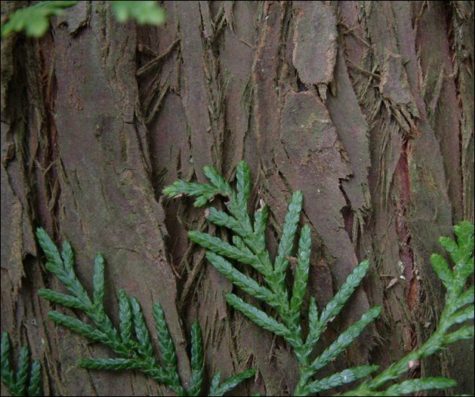
History and Lore
White Cedar (Arborvitae) is a tree with important uses in traditional Ojibwe culture. Honored with the name Nookomis Giizhik (“Grandmother Cedar”), the tree is the subject of sacred legends and is considered a gift to humanity for its myriad uses, among them crafts, construction, and medicine.
A nice native American story about the Cedar can be found here: The Story Of Cedar.
It is one of the four plants of the Ojibwe medicine wheel, associated with the north. White-cedar foliage is rich in Vitamin C and is believed to be the annedda which cured the scurvy of Jacques Cartier and his party in the winter of 1535–1536. There are some reports that the Ojibwa made a soup from the inner bark of the soft twigs.
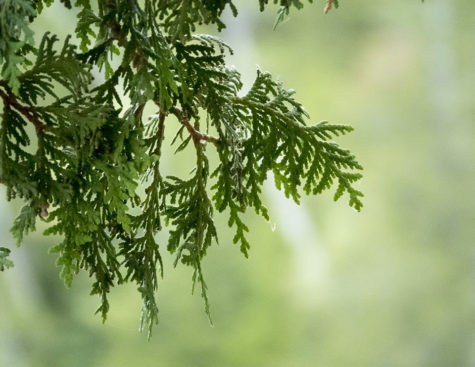
Arborvitae Aromatherapy
Turn Arborvitae oil into a household spray with this easy do-it-yourself. Add a few drops of Arborvitae essential oil into a spray bottle and add water. Use this spray on surfaces or on hands. Arborvitae oil is a powerful cleansing and purifying agent. By incorporating this spray into your home, you can protect yourself and your family against seasonal and environmental threats while keeping your house fresh and clean.
Arborvitae essential oil has the ability to inspire feelings of peace and calm. If you are looking for a great way to unwind after a long day, place a few drops of Arborvitae oil into a diffuser or rub a drop of Arborvitae oil onto your wrists to produce a sense of peace and calm. Additionally, using Arborvitae essential oil during yoga or Pilates can increase the effectivity of your experience by inducing feelings of soothing relaxation. Diffusing Arborvitae essential oil can also help purify the air and provide a grounding aroma.
Bring your furniture back to life with this DIY Wood Polish with essential oils. If you want to keep wood looking fresh and clean, it is important to invest in proper cleaning supplies and a good routine. One of the most effective ways to clean wood is by using a wood polish that is natural and free of any harmful chemicals. Many commercial wood polishes contain chemicals and artificial fragrances that can cause irritation or health problems when not applied with proper safety precautions. Follow the instructions to this homemade solution to create a natural wood polish that is free of harmful toxins.
Wood furniture should only be polished every couple of months, but make sure to maintain the look and quality of your wood furniture by frequently dusting it or wiping it with a damp microfiber cloth. This will help to keep dust and damaging substances away from the wood and will help keep the wood from looking aged.
Create your own musky outdoor cologne with Arborvitae essential oil. Arborvitae oil’s aroma is woody and warm and when combined with Cedarwood and Frankincense, provides an invigorating aroma, perfect for a fresh cologne scent. Using these oils together will create a great cologne for any occasion and will also produce a fragrance that uplifts and relaxes the senses.
Arborvitae essential oil blends well with Birch, Cedarwood, Cassia, Cinnamon Bark, and Eucalyptus essential oils for diffusion.
Sources:
- Encyclopedia of Herbology
- Encyclopedia of Magickal Ingredients
- Hoodoo Herb and Root Magick
- doTERRA
- Latin Name: Juniperus virginiana
- Planet: Sun
- Element: Fire
- Part Used: Dried wood, essential oil
- Magickal Influences: Spirituality, Self-control
- Warning: Cedarwood oil should not be used by pregnant women.
Cedar has an important place in many cultures as a strong spiritual agent with a cleansing presence, a protective plant in rituals and as medicine. It is commonly ascribed similar properties as Sage; the needles, bark, or sap is burnt as an incense, the smoke it emits protecting and cleansing against spiritual “residue.” Cedar can be “smudged” like sage, to purify a space, home, or person.
In the ancient world, cedar from Lebanon was highly prized – so much so that only a few trees remain standing in that country. The name Lebanon is derived from the Akkadian word lubbunu, incense.
This was one of the most widely used incenses in the general Mesopotamian region and by the pre-contact Native American tribes.
There are few among us who aren’t familiar with the rich scent of cedar. Shavings of the wood are sold in pet supply stores. The characteristic smell of pencils stems from the red cedarwood used to produce them. And many of us have at least smelled a cedarwood chest. These are ideal for storing magickal supplies (everything, that is, except herbs and essential oils).
The fragrant, calming smoke when the wood burns is believed to allay nightmares, night terrors, hauntings, malevolent influences/thought forms, evil spirits, and ill-meaning wild animals. Many native peoples in North America use the smoke to cleanse a home; in the Native-Hispanic traditions, home-cleansings are called “limpias,” and Cedar wood being favored in this way. Again, the smoke of Cedar is used to purify the body, not just the home.
Two main cedarwood essential oils are available. Because the essential oils share similar constituents, Atlas Cedarwood (Cedrus atlantica) or Red Cedarwood (Juniperus virginiana) can be used with equal effectiveness in magickal aromatherapy.
The scent of the wood and the essential oil promotes spirituality. Inhale this sweetly antiseptic, calming fragrance before religious rituals to deepen your connection with Deity.
It’s spiritual qualities make the fragrance of cedar ideal for bringing ourselves into balance. Smell the aroma and visualize yourself as poised, calm, and in control of your own life.
Many Cherokee descendants carry a small piece of cedar wood in their medicine bags worn around the neck for protection. In a legend of the cedar tree told by the Cherokee Indians, the trees literally hold spirits of their ancestors, and they believe the wood carries powerful protective spirits. It is told that the Creator placed the spirits of their people in a newly created tree which makes it a very special tree indeed.
In another old Indian legend, a young hunter has a vision of a redheaded woodpecker that teaches him how to make the flute from a red cedarwood tree; the young hunter uses his flute as a love charm to win his wife, who was the daughter of a big and powerful chief of the village.
It made its way into folklore; bringing good luck and good fortune, health and healing, cedar was burned to invite positive energy, happiness, harmony and peace. Cedar chips or shavings were burned to purify the vibrations of your sacred area and house, driving out all negative entities. Fresh cedar boughs are used as brooms for purification, exorcisms and to cleanse temples.

Superstitions and Lore
The Eastern Red Cedar is a slow growing tree and lives to be very old. It gets its name, grave yard tree, because of an old superstition that says, when a red cedar you planted grows tall enough to shade your grave, it will be time for you to die.
Never transplant a Cedar tree, it is bad luck. If you do transplant a Cedar tree and it dies, you will die soon thereafter.
In the Medieval Christian tradition, a cedar trees (along with elder trees) were thought to possibly have been used to make the cross that Jesus was crucified on, for this reason it was considered bad luck to burn cedar. It was also believed that Cedar brought poverty, so it was not a good idea to put one in your yard.
On the other hand, if a Cedar tree comes up on your land, don’t cut it down. As long as that tree flourishes, your family will have good health.
The Arabs referred to the older Cedars of Lebanon as “saints” and believed that he who injured one would be overtaken by evil.
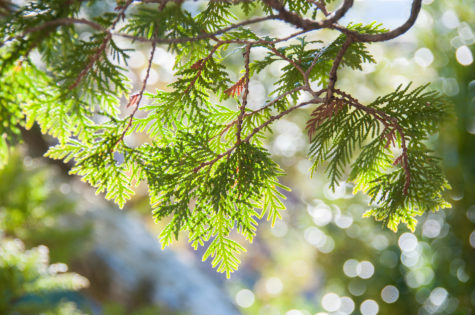
Some Thoughts About Red Cedar
From the Iowa Herbalist here are some interesting thoughts about the Eastern Red Cedar:
I always find it interesting and thought-provoking when the spiritual and emotional effects of plants reflect their physical ones. Just as Cedar seeks to purge our bodies of spiritual impurities, or to protect a home from negative influences, the hard reality is seen at work when Cedar is taken as medicine: whether it is expelling mucus from our lungs as a stimulating expectorant, clearing them of bacterial or viral infection; or opening up our pores in a cleansing fever to clear toxins, as invoked and adopted by sweat ceremonies. Whether you believe in esoteric herbalism, or not, Cedar does one thing: it cleans us, in mind and body.
Now, when I take that mind-transporting whiff of Cedar smoke, I realize why I felt that way. This beautiful tree’s magic is powerful. If you ever need a friend in the midst of illness, or during a hard emotional time, or if you just need to get some bugs out of your system– Cedar is your herb.
If you wish for simpler times, are feeling nostalgic or just want to reminisce, no plant can summon that feeling better; taking you far up into a cabin in the mountains, surrounded by pines and firs, and blankets. Enjoy it in a tea, your favorite elixir, a tasty syrup or perhaps in a calming incense blend. I remember such effects when I’m winding in between the rust-colored Eastern Red Cedars, peppered across Iowa’s tawny grasslands in winter, harvesting their little blue cones. Each time I bring in a jar or two, I spread some of the berries in places where Cedars don’t grow– to make sure there are more trees there for us to enjoy in the future. It’s my way of saying: “Thank you.”
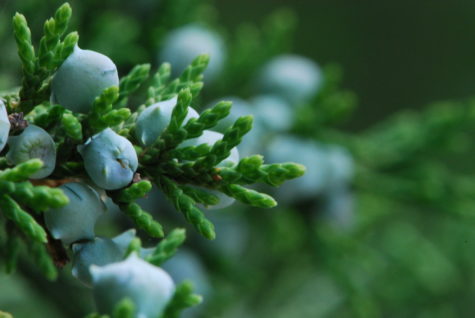
About Juniper
Because Red Cedar is a Juniper plant, the following also holds true.
Juniper, particularly through her wood and berries, is an absolutely wonderful tree with a wide range of uses. In terms of overall meanings in a North American context, we might summarize with the following:
Juniper is about warmth and fire. Juniper helps warm people up and is a strong fire-dominant tree, suggesting many associations with fire: passion, energy, warmth, and the sun.
Juniper offers hope in dark times. Juniper’s berries have long been a staple through the darkest of winters, and I see this both physically and metaphorically. Culturally, we are in a period of darkness, and trees like Juniper can help see us through.
Juniper offers regeneration and bringing things back. Juniper’s ability to grow in places few other trees can demonstrate that this tree is a true land healer, offering us hope in these dark times and sharing the critical message of the healing power of nature. I also think this is tied to its sympathetic magick uses in the American magickal traditions–Juniper helps bring things back.
Sources:
- Encyclopedia of Herbology
- Locusts and Honey
- Magical Aromatherapy by Scott Cunningham
- Iowa Herbalist
- Encyclopedia of Superstitions
- Druid’s Garden
Folk Names:
- Angel Food
- Archangel
- Garden Angelica
- Masterwort
- Root of the Holy Ghost
Magickal Uses:
Angelica (Angelica archangelica) is known in magickal herbalism as a powerful guardian and healer. It is said to banish negativity and attract positive energy. Angelica grows in tall, blossoming stalks—but typically only the root portion is used in spellwork. It is said to enhance female power, protect children, ward off evil, and improve health and family matters.
Angelica means angelic and in the places where it grows, it has been revered as a special plant. In Scandanavia, it was used as a shamanic medicine by the indigenous Sami people. In the U.S., various varieties of Angelica were used in rituals and ceremonies by Native American tribes. The Iroquois brewed Angelica root into a tea and sprinkled it about their homes to quiet “rattling” ghosts.
Angelica’s magickal virtues are linked to its robust stature, pleasant aroma, and association with the Archangel Michael. Legend has it that the angel appeared in a dream to a monk, showing him the herb that could cure the plague in Europe. Traditionally, Angelica blooms on the feast of the Apparition of the Archangel Michael, May 8.
Ruled by the Sun and associated with Venus, Angelica is most often used in spells for protection and exorcism. It can be grown in the garden as a protection. Carry the root with you as an amulet. Burn the dried leaves in exorcism rituals.
Burn the powdered root when you want to invoke angels. Because Angelica is a healing herb, you can mix it in bathwater to promote good health. it also removes hexes. Sprinkle around the house to ward off evil or dry dust your body to remove a curse. It is an ingredient in a Hoodoo working known as the Fiery Wall of Protection.
Angelica is also considered lucky, so rub the root between your palms when you gamble or pick your lottery numbers.
- Carry a piece of Angelica root to bring strength and ward off hexes.
- Put the root in a white mojo bag for protection, or a yellow one for courage.
- Add the dried root to incenses, floor washes, and baths to break jinxes and purify the home.
- Use Angelica to consecrate amulets of Archangel Michael and all Solar charms.
Angelica is associated with personal courage, when that courage is based in moral uprightness. Angelica is said to bring blessings of emotional temperance and harmonious home life.
Mexicans say that if a girl or young woman has been badly frightened, she should carry a whole Angelica root in a white bag. If she was frightened by a man, add a holy card of the Archangel Michael.
Folklore:
It is the date of the blooming that has been regarded as the source of the plant’s name. The day of Michael the Archangel used to be May 8, and Angelica blooms on that date, hence Angelica archangelica. There is more of Angelica in the folklore, such as the legend that an archangel revealed in a vision that Angelica would cure the plague. In time, Angelica came to be regarded as a simply angelic plant, and was known widely as “The Root of the Holy Ghost.”
The history of Angelica is rooted in prehistoric times and even the passage of centuries couldn’t shake the associations between Angelica and pagan beliefs from the Christian mind. It is altogether possible that the plant acquired its angelic stature in the folklore because of the pagan regard for the plant as an infallible guard against witches and evil spirits, and their spells and enchantments.
Peasants tied Angelica leaves around the necks of their children to protect them from harm, and even the name, when invoked, was supposed to be helpful in a jam.
It is alleged that it is the custom in the lake district of what was once Latvia for country peasants to take part in an annual procession, carrying Angelica stems to sell in the towns. Part of the procession is the chanting of a chorus with words so old that no one knows what they mean. This ritual was an early-summer custom and the words of the chorus have been passed from generation to generation.
Metaphysical Meanings
- Magnifies: Divine support, wisdom + deeper meaning
- Dissolves: Apathy, lack of connection, superficiality, surface level perspective
If you are attracted to Angelica, you may be interested in distilling a deeper meaning from everything in life. You may feel tired of things that feel flat or superficial, yearning for a deeper authentic connection to people and a truer intimacy in relationships.
Sometimes we feel safer staying on the surface level in our conversations and experiences. Other times we feel a sense of apathy, disengagement, or worry that there is no greater meaning to the occurrences in our lives. We may fight what happens to us, try to control it or feel hopeless vs. trusting in the wisdom of life.
Angelica magnifies our everyday experience of interconnectedness and deeper meaning woven throughout everything that happens in our lives. It enhances our awareness of benevolent unseen forces and angelic or protective support. It opens up a visceral sense of magic and synchronicity, and a feeling of being fortunate, lucky and grateful. Everything around us feels whimsical and rich with meaning.
We can relinquish control and allow ourselves to trust in the way life unfolds. We have a sense that we are connected to everything and that there is divine support in all our endeavors. We experience a knowingness that we are supported by divine or beneficial good forces and we can ask for assistance or have a relationship with them.
Sources:
This information was collected from a variety of sources all of which are listed in a much more in depth look at Angelica over at the Encyclopedia of Herbology
The unicorn is one of the most famous and endearing of mystical creatures associated with fantasy, mythology, and magic. Images of the unicorn have fascinated people all over the world for centuries. Such a powerful and easily recognized symbol can have an important place in magical practice.
Symbols are integral to our lives, especially for magic and visualization. Often the success of a spell relies heavily on the symbolism that is chosen and how deeply it affects the user. Many people are drawn to magical creatures and have an affinity for certain ones, collecting various images of that particular creature. Since unicorns are among the most popular, here are some ways you can incorporate unicorn symbolism into magical practice.
Even if you have never been particularly fascinated with magical creatures, getting to know them by investigating their characteristics can add a new dimension to your personal power.
First, consider what the creature symbolizes to you. Unicorns have many standard associations, but we can build on this by adding our own personal characteristics or feelings.
For example, I first fell in love with unicorns as a child, so to me they represent not merely innocence, but a playfulness and lightness of spirit, a carefree time. As I grew older, that sense of joy and happiness was tinged with the melancholy moments of adolescence and the unicorn matured with me to become an escape from the sometimes painful events of growing up. But more than anything else, I associate the unicorn with imagination and purity—and the beautiful free spirit we need to recapture to avoid becoming jaded by the sometimes harsh realities of life. In short, the unicorn is hope and possibility.
But you may have different associations and feelings when you look at an image of the unicorn. That’s fine—the point is to use the symbolism for something meaningful to you and to focus on these feelings in your magical practice. Unicorn imagery can be used in spells for healing, peace, comfort, and inspiration. Still others may associate the unicorn with love, or to some they may represent bravery or strength. Choose what the unicorn means to you and incorporate that image into your spells and meditations.
Begin by collecting a variety of images. Or, if you already have a substantial collection, take inventory to see what you have and think of ways you can use them. These items may be statues, drawings, jewelry, clothing, or anything else you can find.
The most basic way to get started is to place a unicorn statue or other type of image on your altar or use it to represent deity. Unicorns have a long history of being associated with spirituality. And of course, statues and images can be placed in other special places in your living and working environment. Wear unicorn jewelry when you need to get in touch with the qualities the unicorn possesses. Place drawings where they can remind you of your goal.
You can anoint statues for special purposes to be placed around your home, in various rooms or outside. This would be ideal for a protection spell. I have a unicorn in almost every room of my house. They’re usually tucked away in a subtle location, but they’re present to remind me of my goal of keeping a youthful spirit and remembering the time when I felt that first touch of magic.
There are other countless ways to incorporate unicorn imagery into your magical practice. Because of the healing associations with the horn, a unicorn image would be excellent in a healing spell or one simply for general health and well-being. Unicorns are often symbols of vitality and strength.
You can also create a unicorn altar with different styles of statues to represent each element. Imagine different encounters with the unicorn for whatever needs you have. If you feel the need for comfort or healing, visualize yourself being healed by the unicorn. Create a detailed scene in your mind and make it as vivid as possible. For strength and confidence, visualize yourself as a unicorn or try a visualization of yourself riding a unicorn to create a feeling of freedom or to relieve stress.
Read about unicorns—history, legends and stories for inspiration. Create unicorn art; even if you don’t have a talent for drawing or painting you can create collages of unicorn images or try sculpting with clay. Write some unicorns stories and poems of your own—create your own myths. If you have children, ask for their help and create a story together.
Cultures all over the world have claimed unicorn stories and legends of some kind. This creature is popular for a reason—it speaks to us on a symbolic level that can be very powerful. Tap into that power by discovering, or rediscovering, what the unicorn means to you.
Source: Llewellyn
- Basic Powers: To attract goodwill and new social contacts.
- Pronunciation: “mawn-nawz”
Mann helps in knowing oneself. It can therefore be used in mediation, to increase dreaming, or to enhance the truth of dreams. It can be used in conjunction with other runes to personalize matters or magick for (or on) a particular individual. It is also useful for cleansing oneself, a ritual which makes the afterlife more pleasant.
In Odin’s poem of runes, the second is one that must be learned by anyone who hopes to be a healer. Without knowing the patient, no healing is possible.
Mannaz is the symbol of mankind as a whole and is often used when assistance from others is needed. It also symbolizes the powers of the rational mind. To gain the assistance of others. Increase in memory and mental powers.
Realization of the divine structure in mankind. Increase in intelligence, memory, and mental powers generally. Balancing the “poles of personality”. Unlocking the mind’s eye.
The Chant
mannaz mannaz mannaz
m m m a a a a a a n n n
mu ma mi me mo
mun man min men mon
um am im em om
mon men min man mun
m m m a a a a a a n n n
m m m m m m m m m
It can be used in conjunction with the symbol, or chanted while visualizing the symbol. The symbol can be etched into a candle while intoning the chant, and then, as the candle burns, the spell is released and sent.
The Statement of Intent:
Be happy in life.
Bring happiness to your friends
and relations.
Yet be aware that death is always waiting.
This is a modern version of the “Rune Poem” that defines this particular rune. It can be used in combination with the chant, and while creating a talisman or spell that uses the power of this rune.
Sources:
- Howard, Understanding Runes
- Thorsson, Futhark
- Peschel, A Practical Guide to the Runes
- Cooper, Esoteric Rune Magic
- Image from Deep Earth Arts
- Basic Powers: For fertility, family matters and love affairs.
- Pronunciation: “bear-kawn-oh”
Healing, good health, calming troubled minds and atonement, childbirth and fertility.
Berkano (or Beorc) is the rune of the Great Mother and as such is the primary rune of fertility. It also conceals and protects and rules over all protective enclosures, such as houses or temple areas. It is very good to use in a runescript for the peace, projection and harmony of a household. It represents a very feminine and nurturing female type. Fertility. Protection. Family matters. To bring ideas to fruition. To represent a certain type of female in a runescript.
Rebirth in the spirit. Strengthens the power of secrecy. Works of concealment and protection. To contain and hold other powers together. Realization of the oneness of the moment as the mother of all things. Bringing ideas to fruition in the creative process.
The Chant
berkano berkano berkano
bu ba bi be bo
b e e e e e r r r r r
(burk bark birk berk bork)
ob eb ib ab ub
b e e e e e r r r r r
It can be used in conjunction with the symbol, or chanted while visualizing the symbol. The symbol can be etched into a candle while intoning the chant, and then, as the candle burns, the spell is released and sent.
The Statement of Intent
Your green leaves bloom early
giving us knowledge
that Spring has come again.
This is a modern version of the “Rune Poem” that defines this particular rune. It can be used in combination with the chant, and while creating a talisman or spell that uses the power of this rune.
Runic Posture
Rune Yoga, or Runic postures are used to anchor the energy of the Rune in your physical body. More about them can be found here: Runic Postures.
Assume the recommended runic posture and sing the name of the rune in a non-exhaustive way that you can feel your body vibrating – in magic literature it is called vibrating. It could be that you can hear overtones clearer as usual during vibrating. Take this as a good sign. You are visualizing the rune with your inner eye, as its form is being represented by your body and the energies are flowing through your body.
Standing with the right arm bent at the elbow and the right hand palm up. The left arm is bent at the shoulder with the left palm down. The two hands meet in the middle. Bend the right knee, and hold your foot against the front of your left leg.
 Because the traditional position seems almost impossible to accomplish, here is a much more comfortable variation:
Because the traditional position seems almost impossible to accomplish, here is a much more comfortable variation:
Stand up, with the left arm bent at the elbow and the palm of the hand on the hip. The left leg is bent at the knee, the heels touching. The left foot is placed at a 90º angle with respect to the right foot. The elbow and knee form the corners of rune B.
Before practicing a rune it is recommended to know everything on the powers of the rune you want to practice. The flow of energy is different for each rune, a field of research for your sensitivity.
The hand positions, or mudras are effective only after you have anchored the runes in your own aura and body. They can be made silent and unobtrusive.
Sources:
-
- Understanding Runes
- Asatru
- Futhark
- Flight of the Condor
- A Practical Guide to the Runes
- Esoteric Rune Magic
- Image from Deep Earth Arts
- Basic Powers: To restore self-confidence and strengthen will-power.
- Pronunciation: “cane-awze”
Kenaz is useful for spiritual understanding, initiation, the harnessing of power, and guardianship. It can be used to bring strength to an individual, or for the banishment of dark forces of any kind. It can help overcome obstacles through learning. It is also a good luck charm. It is not, however, any good for combat. It banishes the dark but it doesn’t defeat it.
Kenaz is another rune of Fire, but unlike Fehu, it is a gentle, more controlled form which gives the ability and the will to create. It is the rune of the artist and craftsman and is useful either when creativity is the issue or when artistic things are very important to the person for whom you are creating the runescript. It also governs the technical aspects of magick. It is the rune that governs passion, lust and sexual love as fiery, positive attributes. Use to strengthen any runescript. Healing, physical well-being. Love, stability and passion in relationships. Fresh starts. Protection of valuables.
Strengthening of abilities in all realms. Creative inspiration. Higher polarization as a tool of operation. Operations of regeneration, healing. Love (especially sexual love).
The Chant
kenaz kenaz kenaz
ku ka ki ke ko
kun kan kin ken kon
ok ek ik ak uk
kaunnnnnnnnn
It can be used in conjunction with the symbol, or chanted while visualizing the symbol. The symbol can be etched into a candle while intoning the chant, and then, as the candle burns, the spell is released and sent.
The Statement of Intent:
The inner light which is never extinguished
brightens the dark weary world.
This body is a great hall;
the mind sits in the body’s high seat.
The call to faith
a torch carrying procession.
This is a modern version of the “Rune Poem” that defines this particular rune. It can be used in combination with the chant, and while creating a talisman or spell that uses the power of this rune.
Runic Posture
Rune Yoga, or Runic postures are used to anchor the energy of the Rune in your physical body. More about them can be found here: Runic Postures.
Assume the recommended runic posture and sing the name of the rune in a non-exhaustive way that you can feel your body vibrating – in magic literature it is called vibrating. It could be that you can hear overtones clearer as usual during vibrating. Take this as a good sign. You are visualizing the rune with your inner eye, as its form is being represented by your body and the energies are flowing through your body.
The traditional posture calls for both arms to be raised at a 45º angle, palms up and open to receive. This posture is based on a slightly different rune shape, which can be seen on the left side of the figure.
 An alternative posture based on the other form of Kenaz is as follows:
An alternative posture based on the other form of Kenaz is as follows:
Stand up, with your right arm raised at a 45º angle and your left arm tilted down at an equal angle. The palm of the right hand looks towards the law, attracting the force, while the fingers of the left hand are extended, projecting towards the manifestation.
Before practicing a rune it is recommended to know everything on the powers of the rune you want to practice. The flow of energy is different for each rune, a field of research for your sensitivity.
The hand positions, or mudras are effective only after you have anchored the runes in your own aura and body. They can be made silent and unobtrusive.
Sources:
- Understanding Runes
- Asatru
- Futhark
- Flight of the Condor
- A Practical Guide to the Runes
- Esoteric Rune Magic
- Image from Deep Earth Arts
- Planet: Venus
- Element: Water
- Symbolism: Love and Trust, Health, Garden Magick
- Stone: Emerald, Rose Quartz
- Birds: Grosbeak
- Color: Yellow-Green, Pink
- Deity: Demeter, Hera, Pomona, Frigga, Freya
- Folk Names: Fruit of the Gods, Fruit of the Underworld, Silver Branch, The Silver Bough, Tree of Love
- Magickal Uses: Love spells, Love Divination, Healing spells, Libations, Offerings, Wand creation, Poppet Magick, and Sachet or Potpourri Magick.
The forbidden fruit yields much power. Cut it in half horizontal to the stem to reveal the witches’ pentagram. A secret way to let someone know that you are a witch is to cut an apple crosswise to show the formation of the seeds in a star shape.
Apples are a food of love. Give an apple to a lover as a present, cut it in half and eat on half while your lover eats his or hers. Alternatively, offer a bite to a prospective lover. If he or she accepts, you will begin a love affair. Twist the stem of an apple while calling out the letters of the alphabet. The letter you call out as the stem breaks will be the first letter of the name of your true love. Rub apple oil or fragrance on red candles to bring true love. Leave an offering of an apple under a tree for Venus and make a request for love.
- Red apples are for love.
- Golden apples for fame and popularity
- Green apples for prosperity
Apple is a great wood for a magickal wand. It is a favorite witch tree. The fruit is used at Mabon and Samhain, and for love spells. Eating an apple opens the gateway into other realms, most often faeryland. It provides illumination and the gaining of knowledge. Dreaming of apples symbolizes prosperity and the good life.
Use apple cider in place of blood or wine if they are called for in old magickal spells and rites. Apples can also be used in place of a poppet.
At Samhain, winning the game of bobbing for apples meant that you would be blessed by the Goddess for a year. Since apples were symbols of Avalon, capturing one from the water represented crossing to the holy isle. The apple is also considered one of the foods of the dead, so they are often piled high on Samhain altars, for Samhain is sometimes known as the “Feast of Apples.”
In 19th Century Lower-Saxon Germany, the first bath water used by a newborn baby was poured over the roots of an apple tree to ensure that the child would have red cheeks, and if it was a girl, large breasts!
Apples and apple blossoms are symbolic of love, healing and immortality. Burn the blossoms as incense, wear as a perfume, and make them into herb candles for a handfasting.
Apples can be used for healing as well. Cut an apple in three pieces, rub each on the sick person’s body, and then bury them. The decaying apple will cure the illness. The same ritual is done with warts.
For fertility, the seeds can be planted in establishing a shrine of trees to Aphrodite or other fertility goddesses. Dried apple seeds can be ground into a powder with a mortar and pestle and used as incense. Apples may be eaten, the juice shared in a chalice ritual cup, or offered as a libation when seeking knowledge through the Tree of Life… an act of calling upon the wisdom from the divine.
Apple Manifestation Spell
Take an apple, a beautiful apple, and then carve a symbol of what you wish on it. This may be a heart, if you desire romance, or you can even write the actual word “LOVE” on it. You can also write a sentence like “I WANT 1000 $” or maybe “I AM HANDSOME” , “I AM HAPPY”, or “I AM A WIZARD”!
Anything you want to be manifested in your life, could be written on the apple. When you are done writing what you wish, take the apple, and start eating it CLOCKWISE. With every bite you take, you get what you desire. Now that you’ve eaten the Apple your wish has already become reality in you.
When you have consumed the apple, you can bury the seeds or you can just toss the core (seeds and all) into a natural environment or wooded area. Now that the rest of the apple is buried or lies on the soil, it will call upon the nature’s force to manifest your desire. Take few minutes to visualize what you have wished for.
Please always remember that when you are visualizing, you should see yourself ALREADY having what you want. Visualize yourself happy in a Marriage, or Rich spending you money on what you desire etc.
Samhain Apple Spell For Love
There is an old Scottish custom of eating an apple on Samhain night while looking into the mirror. Legend says that you will see your true love reflected there. A Victorian Halloween card states the following verse:
On Halloween look in the glass,
Your future husband’s face shall pass.
A modern adaptation of this charm could include standing before the mirror at midnight on Samhain. The new charm will help you to recognize a future or potential love.
Slice the apple crosswise to expose the star-shaped arrangement of seeds inside. Light a tea-light candle and place the apple slices and the candle before the mirror. At midnight, say the following charm three times:
As this Samhain night rushes past,
Reveal to me a love that shall last.
May I know them when next we meet
May our love be both strong and sweet.
Allow the candle to burn out, and the next morning leave the apple pieces outside as an offering to the nature spirits. Pay attention and see who you “meet” within the next thirty days.
Witchy Ways To Use Apples
1. Use apples in tarot spells. Surround the Empress card from the tarot with apple slices (dried or fresh) and leave them on the altar for help with fertility.
2. Pour a libation apple juice to encourage wisdom. In Western lore, apples strongly symbolize knowledge and self-awareness. Pour a libation of apple juice during your next ritual to ask for the gift of insight or to seek help with life decisions.
3. Include apples in spells to avert temptation. Apples may be used in weight loss spells or spells for seekers fighting addictive patterns. Bury an apple with tobacco (or another symbol of vice) and light a candle every night for a full moon cycle to support earnest efforts at breaking negative habits.
4. Toss in cauldron brews for love. Add apples peels to a large pot or cauldron of water with cinnamon, allspice and/or ginger root to infuse your home with romance. Great for date night!
5. Cut an apple in half to find the pentacle. If you cut an apple in half (the “fat way,” not the “tall way,” if that makes sense), you will find a pentacle star in the middle. Press spell ingredients into the flesh or or use it to symbolize earth on an all-natural altar.
6. Make a wand from the wood. Apple branches make gorgeous wands. Leave yours natural, or decorate it with gemstones, shells, sea glass, feathers, ect.
7. Fill a basket of apples and put it on your Samhain or Mabon altar. As the “veil between worlds” thins between Mabon and Samhain, our connection to our ancestors grows closer. Apples symbolize the food of the dead, so leave them on the altar to honor your ancestors and welcome them to “feast with you” during the harvest season.
8. Burn apple blossom incense to enhance your connection to other realms. All parts of the apple are appropriate for inclusion in rituals for heightened awareness, but the dried blossoms make especially convenient loose incense.
9. Include the seeds in protection spells. The bitter seeds of an apple make excellent additions to mojo bags, spells or amulets for protection.
10. Pour apple cider to give life to a newly dug field, or garden.
11. Plant an apple tree your yard to bless your home for prosperity. Apples symbolize abundance and growth, making them the perfect “centerpiece” tree for garden magic. If you live in a climate where apple trees do well and you lucked into a home with land, the commitment of an apple tree to your homestead with bless you for years to come.
12. Use a crabapple, or a cultivated apple if you don’t have crabapples available. If possible, use one that you have hand picked. Carve the initials of the one you love and desire, and your own initials, in a ring around the apple. Bury it in the ground, or commit it to a body of water.
The Lesson of Apple
The apple teaches the lesson of love and faith, generosity and gratitude. Love not just between man and woman but as the driving force behind our existence and the relationships that we share with others; faith both in ourselves and in others; and generosity and trust in the understanding that a heart that is open to give and receive is both the gateway to personal happiness and fulfillment and the key that unlocks the secrets of the Otherworld. The generous apple satisfies body, mind, and spirit, and warns against miserliness, for like attracts like. What we give will be the measure of all we receive.
Sources:
- The Goddess Tree
- Moody Moons
- Magical Herbalism
- Encyclopedia of Magickal Ingredients
